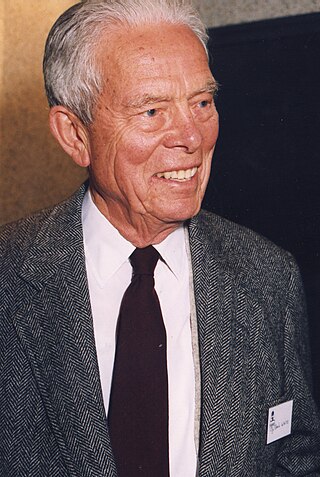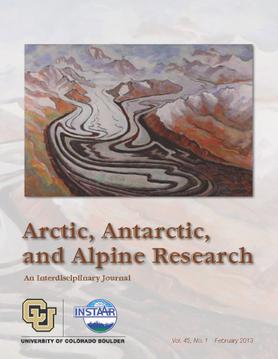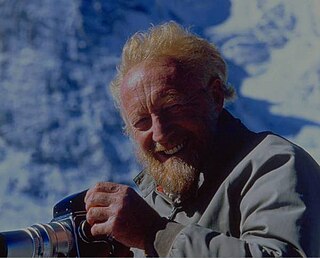Related Research Articles

The United Nations University (UNU) is the think tank and academic arm of the United Nations. Headquartered in Shibuya, Tokyo, Japan, with diplomatic status as a UN institution, its mission is to help resolve global issues related to human development and welfare through collaborative research and education.

Man and the Biosphere Programme (MAB) is an intergovernmental scientific program, launched in 1971 by UNESCO, that aims to establish a scientific basis for the improvement of relationships between people and their environments.
The UNESCO World Network of Biosphere Reserves (WNBR) covers internationally designated protected areas, known as biosphere reserves, which are meant to demonstrate a balanced relationship between people and nature. They are created under the Man and the Biosphere Programme (MAB). Aug

Mount Kenya National Park was established in 1949 to protect Mount Kenya, the wildlife, and the surrounding environment, which forms a habitat for wild animals, as well as acting as an area for the catchment of water, to supply Kenya's water.
There are 18 biosphere reserves in India. They protect larger areas of natural habitat than a typical national park or animal sanctuary, and often include one or more national parks or reserves, along with buffer zones that are open to some economic uses. Protection is granted not only to the flora and fauna of the protected region, but also to the human communities who inhabit these regions, and their ways of life. In total there are 18 biosphere reserves in India.

Gilbert Fowler White was a prominent American geographer, sometimes termed the "father of floodplain management" and the "leading environmental geographer of the 20th century". White is known predominantly for his work on natural hazards, particularly flooding, and the importance of sound water management in contemporary society.

The World Database on Protected Areas (WDPA) is the largest assembly of data on the world's terrestrial and marine protected areas, containing more than 260,000 protected areas as of August 2020, with records covering 245 countries and territories throughout the world. The WDPA is a joint venture between the United Nations Environment Programme World Conservation Monitoring Centre and the International Union for Conservation of Nature World Commission on Protected Areas.

The United Nations University Institute on Comparative Regional Integration Studies (UNU-CRIS) is a Research and Training Institute of the United Nations University (UNU). Based in Bruges, Belgium since 2001, UNU-CRIS specializes in the comparative study of regional integration and the provision of global and regional public goods, including environmental stability, poverty reduction, peace, and justice.

The United Nations University Office at UNESCO serves as academic interface between the United Nations University (UNU) and its Institutes and UNESCO and its Permanent Delegations in Paris, France. The UNU Office at UNESCO also develops contacts between UNU and other Paris-based international organisations as well with French academia.

Paul Thornell Baker was Evan Pugh Professor Emeritus of Anthropology at the Pennsylvania State University, and was “one of the most influential biological anthropologists of his generation, contributing substantially to the transformation of the field from a largely descriptive to a hypothesis-driven science in the latter half of the 20th century. He pioneered multidisciplinary field science, firmly established a place for biological anthropology and human population biology in national and international science, and trained a host of graduate students in good science, who, in turn, continued his commitment to collaborative research.”

The Krkonoše/Karkonosze Transboundary Biosphere Reserve is a MAB transboundary biosphere reserve, mixed mountain and highland system designated by UNESCO as Krkonoše/Karkonosze Mountains in 1992. It is shared by the Czech Republic and Poland. Notably, it is one of only two successful transboundary management structures in existence, aside from the East Carpathians Biosphere Reserve, due to contrasting goals in other shared areas covered by MAB.

Arctic, Antarctic, and Alpine Research is a peer-reviewed scientific journal published by the Institute of Arctic and Alpine Research. It covers research on all aspects of Arctic, Antarctic, and alpine environments, including subarctic, subantarctic, subalpine, and paleoenvironments. Jack D. Ives founded the journal in 1969 as Arctic and Alpine Research and the name was expanded to include the Antarctic in 1999. The editors-in-chief are Anne E. Jennings and Bill Bowman.
Niwot Ridge is an alpine ecology research station located 65 km northwest of Denver in north-central Colorado. It is on the Front Range of the southern Rocky Mountains and lies within the Roosevelt National Forest. Niwot Ridge is 2,900 metres (9,500 ft) high.

The Jornada Biosphere Reserve is a UNESCO Biosphere Reserve in southern New Mexico. It is one of three biosphere reserves representing the Chihuahuan Desert. The area extends from the crest of the San Andres Mountains, which are dominated by shrub woodlands, to the Jornada Plains characterized by semi-desert grasslands.
The Cape Winelands Biosphere Reserve is located in the Western Cape Province of South Africa approximately 40 km east of Cape Town. The Biosphere Reserve extends from the Kogelberg Biosphere Reserve in the south, northwards along the Cape Fold Belt Mountain Chain and the adjoining valleys constituting the Cape Winelands. The Biosphere Reserve incorporates key portions of the registered Cape Floral Region Protected Areas World Heritage Site. The Reserve was designated in 2007.
Boshra Salem is a professor, founder and the Chair of the Department of Environmental Sciences at Alexandria University in Alexandria, Egypt. She is president of Unesco's Man and the Biosphere (MAB) International Coordinating Council (ICC) and serves on the International Council for Science (ICSU)'s Committee for Scientific Planning & Review. She has received a number of awards, including being recognized as an outstanding female scientist in the Women in Science Hall of Fame by the Embassy of the United States in Cairo, Egypt.

Reza Ardakanian is an Iranian professor, politician and former Minister of Energy of Iran, a position he had held from 29 October 2017 to 25 August 2021. He was previously deputy energy minister in the 1980s and 1990s and has been involved with UN-Water.

Bruno Messerli was a Swiss geographer and university professor who focused on high mountains and highland-lowland linkages. He was appointed Full Professor of Geomorphology in 1968 by the University of Bern, where he taught and carried out research until his retirement in 1996. He contributed significantly to the inclusion of a mountain agenda, Chapter 13 — Managing Fragile Ecosystems — Sustainable Mountain Development in Agenda 21, the official action plan of the United Nations Conference on Environment and Development (UNCED), also known as the Rio de Janeiro Earth Summit, the Rio Summit, the Rio Conference, and the Earth Summit, held in Rio de Janeiro from 3 to 14 June in 1992.

Jack D. Ives is a Canadian montologist, an Honorary Adjunct Research Professor of Geography and Environmental Studies at Carleton University in Ottawa, Ontario, Canada, an author, and a prominent advocate of mountain issues at the global level. He was formerly director of the Institute of Arctic and Alpine Research at the University of Colorado, Boulder, founding editor of two peer-reviewed journals, chair of the Commission on High Altitude Geoecology under the auspices of the International Geographical Union, and a senior advisor on mountain ecology and sustainable development for United Nations University.
Fatima Mereles is a botanist and academic from Paraguay, who specialises in wetland flora.
References
- ↑ Gerrard, John (1990). Mountain Environments: An Examination of the Physical Geography of Mountains . MIT Press. p. 1. ISBN 0-262-07128-2 – via Internet Archive.
International Mountain Society.
- 1 2 "International Mountain Society". Mountain Research and Development. Retrieved July 4, 2016.
- ↑ "Organizational Information", Mountain Research and Development, vol. 1, no. 1, p. inside cover, May 1981
- ↑ Soedjatmoko (May 1981), "Foreword", Mountain Research and Development, 1 (1): 1, JSTOR 3672941
- 1 2 3 Jack D. Ives (May 1981), "Editorial", Mountain Research and Development, United Nations University and International Mountain Society, 1 (1): 3–4, JSTOR 3672942
- ↑ Jack D. Ives (May 1981), "Editorial", Mountain Research and Development, 1 (1): 3–4, JSTOR 3672942
- ↑ Jack D. Ives (May 1999), "Editorial", Mountain Research and Development, 19 (4): 3–4, JSTOR 25164042
- ↑ Ives, Jack (2013). Sustainable Mountain Development: Getting the facts right. Himalayan Association for the Advancement of Science. p. 205. ISBN 978-9937261951.
- ↑ Hanspeter Liniger; Gudrun Schwilch; Hans Hurni (2002), "Editorial", Mountain Research and Development, 22 (1): 3, doi: 10.1659/0276-4741(2002)022[0003:E]2.0.CO;2 , JSTOR 3674171, S2CID 221312677